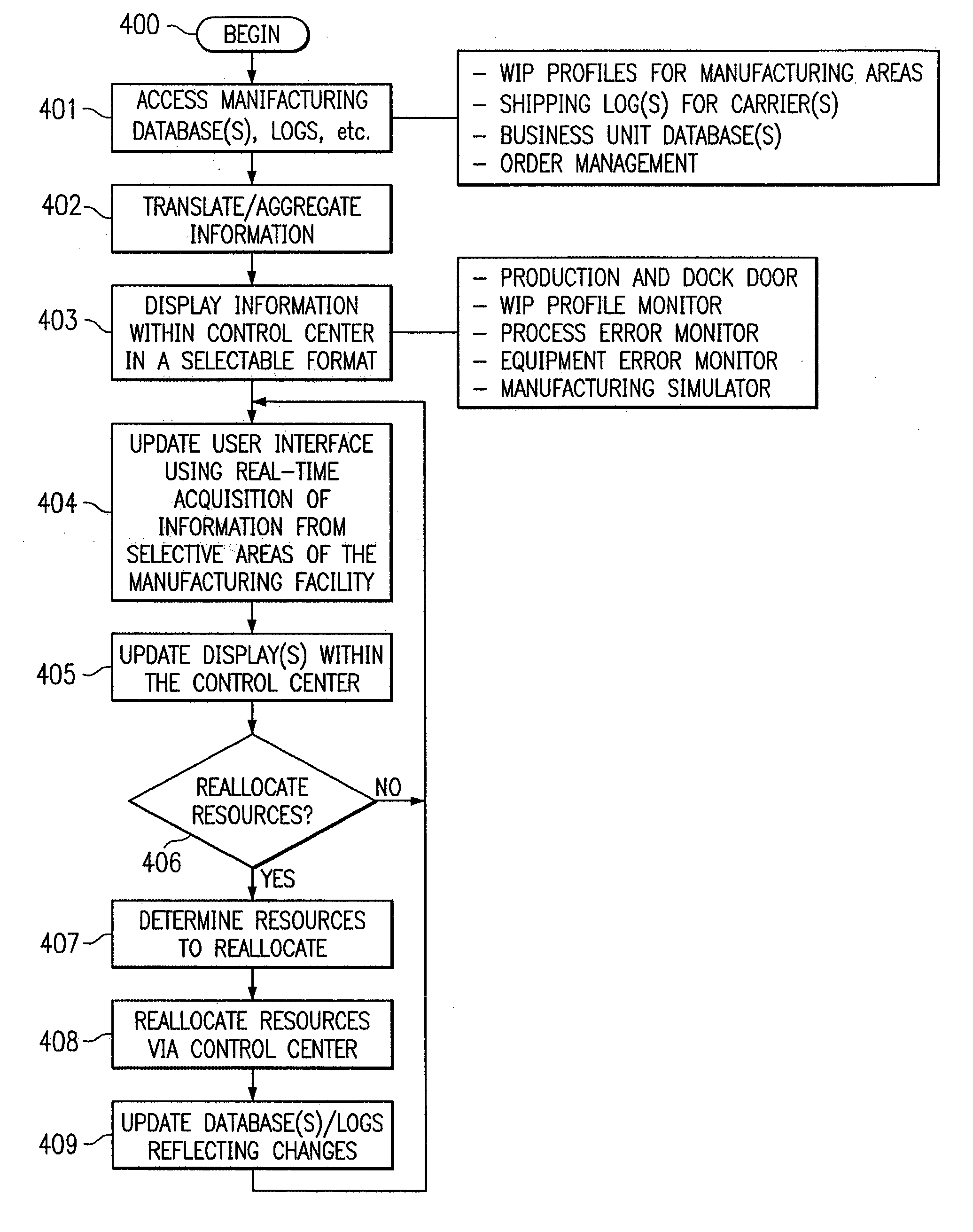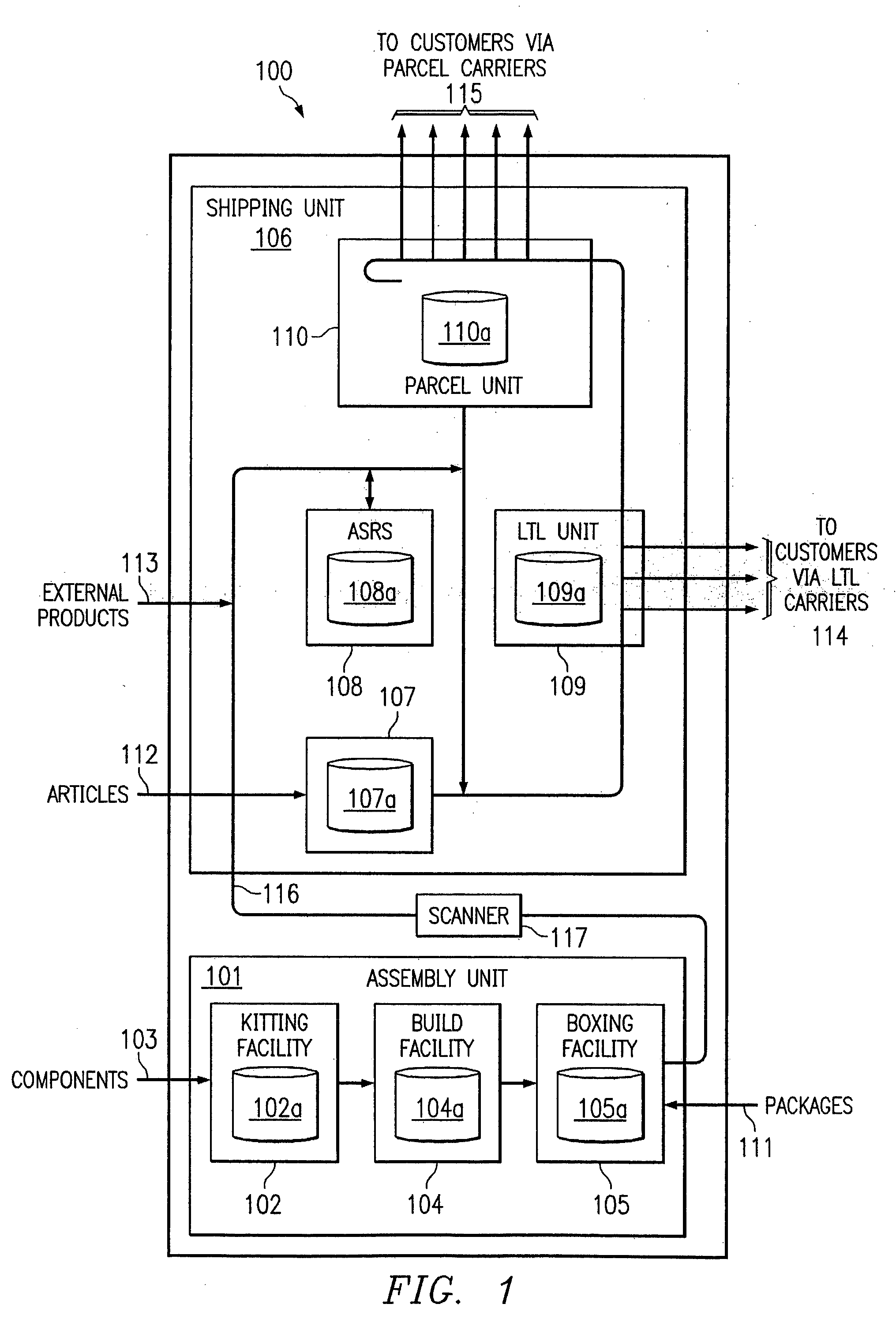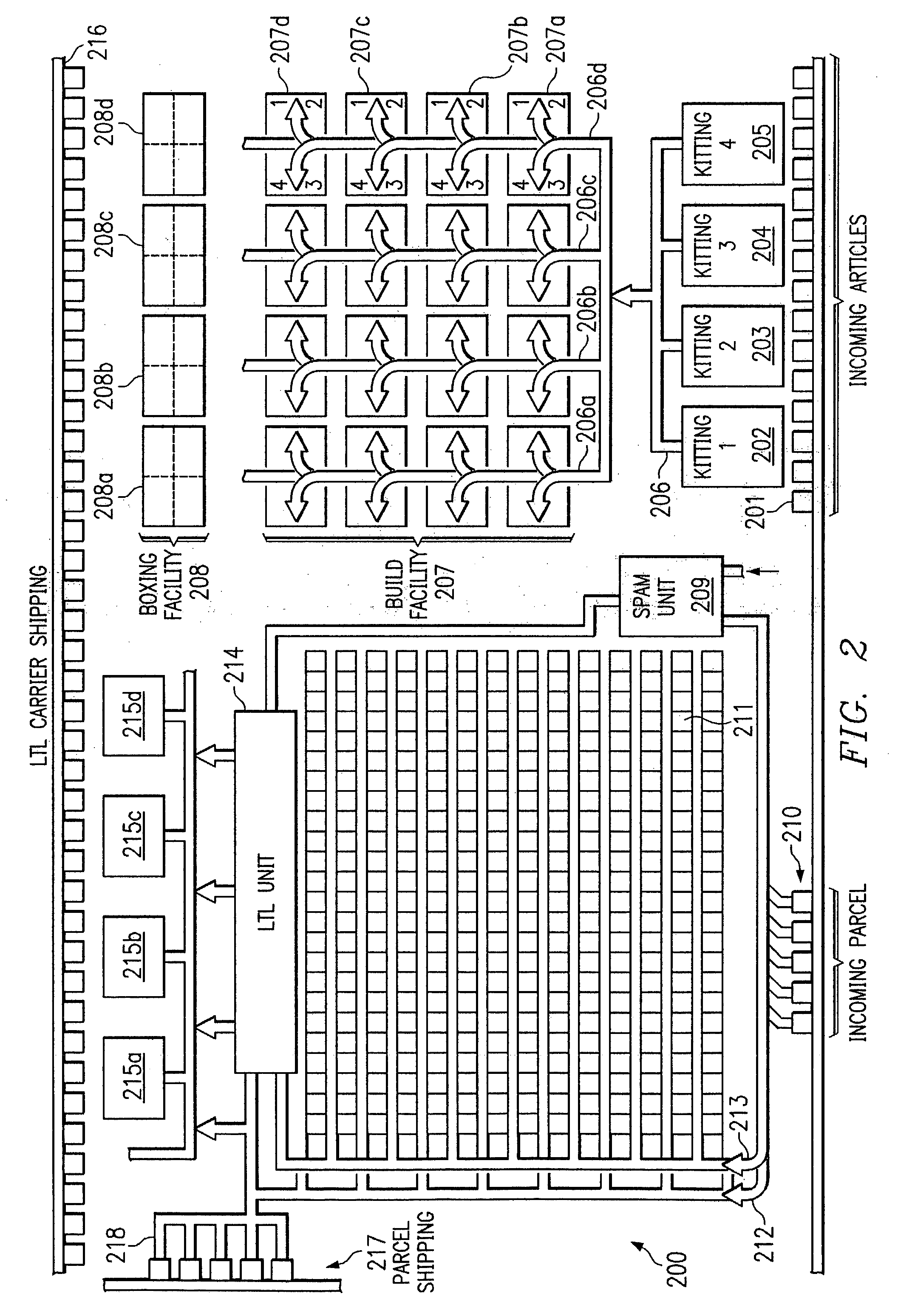Method, system and facility for controlling resource allocation within a manufacturing environment
a technology of resource allocation and manufacturing environment, applied in the direction of total factory control, programme control, electric programme control, etc., can solve the problems of high production cost, difficult or impossible to market at a profit, and risky prediction of customer demand, so as to reduce production costs
- Summary
- Abstract
- Description
- Claims
- Application Information
AI Technical Summary
Benefits of technology
Problems solved by technology
Method used
Image
Examples
Embodiment Construction
[0022] Preferred embodiments and their advantages are best understood by reference to FIGS. 1 through 6, wherein like numbers are used to indicate like and corresponding parts. Referring to FIG. 1, there is depicted an exemplary manufacturing facility 100 according to the present disclosure. In the illustrative embodiment, manufacturing facility 100 is used to manufacture computers, which are shipped directly to customers, along with associated articles (such as monitors, speakers, printers, etc). Manufacturing facility 100 is operated according to a new process and includes significant architectural enhancements, new hardware, and new control logic that provides increased quality and efficiency.
[0023] During production, the manufacturer receives one or more customer orders from a business unit and orders components from suppliers needed to manufacture the products for those orders and articles and packaging (such as boxes and protective inserts) needed to fill the orders. Preferabl...
PUM
 Login to View More
Login to View More Abstract
Description
Claims
Application Information
 Login to View More
Login to View More - R&D
- Intellectual Property
- Life Sciences
- Materials
- Tech Scout
- Unparalleled Data Quality
- Higher Quality Content
- 60% Fewer Hallucinations
Browse by: Latest US Patents, China's latest patents, Technical Efficacy Thesaurus, Application Domain, Technology Topic, Popular Technical Reports.
© 2025 PatSnap. All rights reserved.Legal|Privacy policy|Modern Slavery Act Transparency Statement|Sitemap|About US| Contact US: help@patsnap.com



